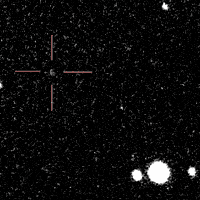 | |
| Discovery [1] | |
|---|---|
| Discovered by | C. S. Shoemaker E. M. Shoemaker |
| Discovery site | Palomar Obs. |
| Discovery date | 12 October 1985 |
| Designations | |
| (7167) Laupheim | |
Named after | Laupheim Observatory [1] (Robert Clausen and team) |
| 1985 TD3 ·1991 VR4 | |
| main-belt [1] [2] ·(outer) background [3] | |
| Orbital characteristics [2] | |
| Epoch 23 March 2018 (JD 2458200.5) | |
| Uncertainty parameter 0 | |
| Observation arc | 32.04 yr (11,702 d) |
| Aphelion | 3.7768 AU |
| Perihelion | 2.4740 AU |
| 3.1254 AU | |
| Eccentricity | 0.2084 |
| 5.53 yr (2,018 d) | |
| 280.23° | |
| 0° 10m 42.24s / day | |
| Inclination | 23.495° |
| 219.57° | |
| 181.55° | |
| TJupiter | 3.0550 |
| Physical characteristics | |
| 17.86 km (calculated) [4] 17.95±5.00 km [5] 20.03±0.78 km [6] 23.229±0.258 km [7] [8] | |
| 7.040±0.0040 h [9] | |
| 0.057±0.011 [7] [8] 0.057(assumed) [4] 0.058±0.005 [6] 0.08±0.06 [5] | |
| C (assumed) [4] | |
| 11.9 [8] 12.00 [5] 12.019±0.002(R) [9] 12.1 [2] 12.23±0.23 [10] 12.30 [6] 12.47 [4] | |
7167 Laupheim, provisional designation 1985 TD3, is a dark background asteroid from the outer regions of the asteroid belt, approximately 20 kilometers (12 miles) in diameter. It was discovered on 12 October 1985, by American astronomers Carolyn and Eugene Shoemaker at the Palomar Observatory in California. The presumed C-type asteroid has a rotation period of 7.04 hours and was named for Robert Clausen and his team at the public Laupheim Observatory in Germany. [1] [4]